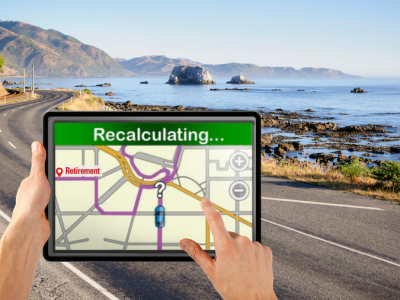Learn » Blog » New Year, new you? Start 2023 right with a KiwiSaver health check
New Year, new you? Start 2023 right with a KiwiSaver health check
Published on 23/01/2023
Topics:
kiwisaver

By Amanda Morrall
With the last week of January quickly approaching, you might be turning your mind to the much-discussed list of “New Year's Resolutions” before February rolls around.
If it’s not already on there, do yourself a favour and include a 2023 KiwiSaver health check on your to-do list. Maybe even put it at the top! Many will have put their KiwiSaver statements to the back of the closet and back of mind, given how challenging 2022 was. But now is not a time to fret about today or last year; it’s a time to think about tomorrow and beyond. We invest for the future.
Begin with a review of the basics. If you’re not sure where to start, this guide might help:
1. Check your contribution rate
If you’re in paid employment, the minimum KiwiSaver contribution is 3% for both you and your employer. While some employers pay more than 3%, they are not legally required to pay more than this. But you can choose to contribute more from your pay - you can choose from 4%, 6%, 8% or 10%.
With the cost of living being what it is, upping one’s contribution rate may not currently be on the cards. BUT if you can afford to increase it, even by 1%, your future self will likely thank you. A 1% difference may not seem like much to add to your future returns right now, but time and compound interest become your best allies when it comes to investing.
Here’s an example found on Sorted’s website:
Take a 25 year-old earning $55k per annum. Their KiwiSaver balance is $10,000, and they’re invested in a growth fund. With a contribution rate of 3%, plus the employer’s 3%, by age 65, they could have up to $315,698. However if they bumped their contribution rate to 4%, that same person could end up with $364,074. That’s $48,376 more. If they increased it to 6%, they could have $460,366 - i.e. $144,668 more.
Use Sorted’s latest retirement calculator to understand the assumptions and see the numbers for yourself.
While the majority of people in KiwiSaver will pay the minimum, the targeted savings rate in many developed countries is 10% of gross income, and the trend is rising towards 15%. In Australia, the minimum contribution for Super there is 10.5%, and going up to 12% by 2025.
Retirement experts in New Zealand have long warned that retirement savings rates in NZ are too low and will leave many underfunded in retirement. To increase your contribution rate, you can talk to your payroll department. You can also instruct a change via Inland Revenue by logging into ‘MyIR’ and going to your KiwiSaver profile (under "More..").
2. Review the future value of your KiwiSaver fund
If you’d like to see what you’re currently on track to have in your account by age 65, dig out your last annual statement. You can also get this by logging into your KiwiSaver account or contacting your KiwiSaver provider directly. On the second page of your statement, you’ll see your balance at the time the statement was generated, your projected balance at age 65, and what that translates to in terms of providing you an income on a weekly basis until age 90. This figure will be based on a number of assumptions. Read them to understand better all the variables they have used. They will include salary increases, inflation and tax, for example.
To preview what the different contribution rates and fund types look like for your projected retirement balance, use the retirement calculator provided by Sorted.org.nz.
3. Check your fund type
If you did not actively choose a fund type when your KiwiSaver was set up, you likely will have ended up in what we call a default fund. Depending on your age, stage and goals for KiwiSaver, this may or may not be appropriate for your needs.
Fund types differ in terms of asset allocation, composition and risk, with growth and aggressive funds being the highest risk. On the upside, they tend to offer the highest long-term returns. Default, balanced and conservative funds provide lower risk, but the returns can also be lower over the long term.
If you don’t know what fund is best for you, Sorted.org.nz provides a free risk profiler tool to help you choose. You can also talk to your KiwiSaver provider or seek independent financial advice.
4. Check your PIR (aka Prescribed Investor Rate)
Your PIR is the tax rate you pay on your KiwiSaver returns. KiwiSaver is taxed while you save. You can find your tax rate here. Most KiwiSaver providers allow you to change the PIR setting online. Not having the correct PIR can mean that you may pay too much tax, or you may be required to pay any PIE tax shortfall if your PIR is too low.
5. Don’t miss out on free money!
If you're over 18 AND have been in KiwiSaver for more than 12 months, you will be eligible for the KiwiSaver government contribution of $521. To qualify, you must have contributed at least $1,043 in the current KiwiSaver year, which runs from 1 July 2022 to 30 June 2023. You may still be eligible for partial credits if you haven’t contributed the total amount. If you're in paid employment (i.e. wages), chances are you'll have met the minimum threshold by automatically paying at least around $21 a week from your earnings.
This government contribution is free money, so make sure you don't miss out!
In personal finance, knowledge is power and power can enable you to accumulate more money. Level up on your financial literacy by signing up to our classroom series today. All information is delivered online to your email address, and you can preview each classroom before you sign up. A simple and easy New Year’s resolution that you can keep!


